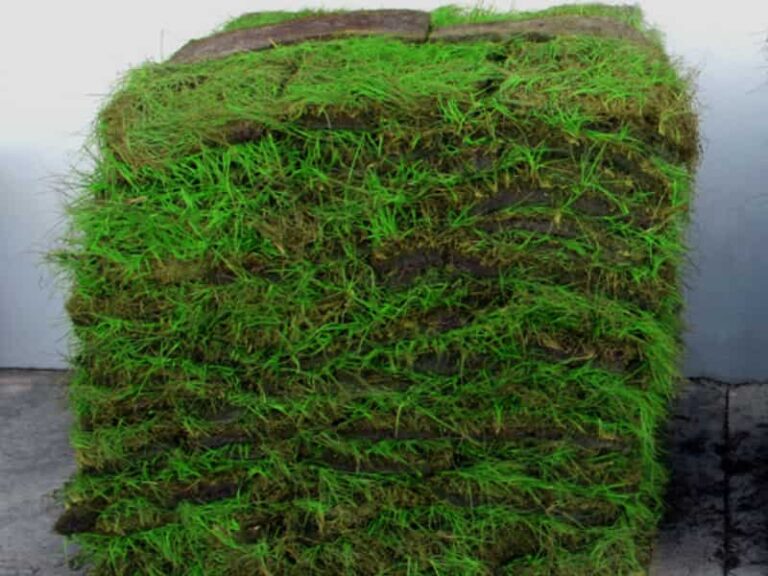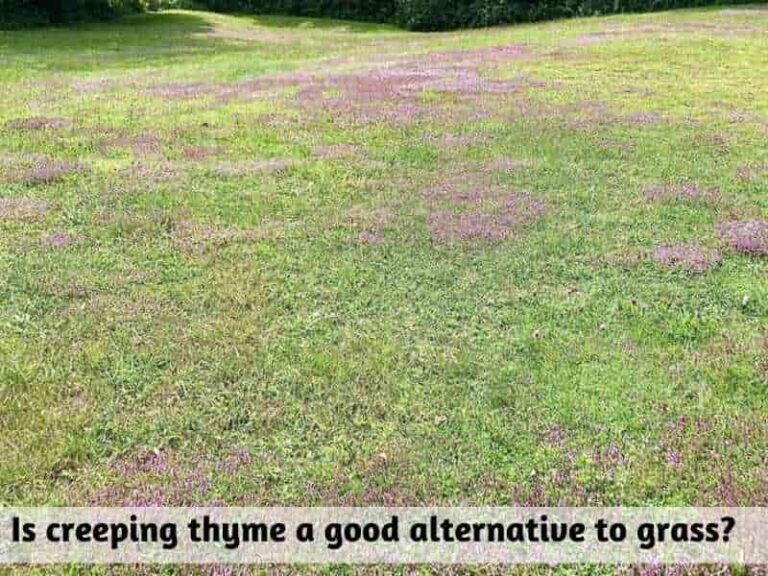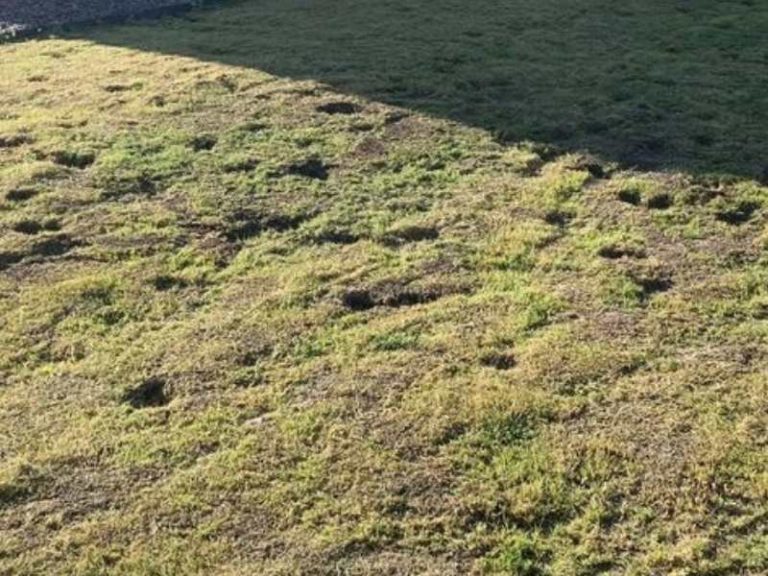Best Time to Fertilize a Lawn- Before or After Rains?
Well-manicured and fertilized lawns are healthy, thicker, denser, greener, and more attractive to stare at. Fertilizers supply extra nutrients that promote healthy turf growth. Fertilizers should be applied at the right time, place, source, and rate.
Fertilize the cold season grass types in spring and falls when temperatures are between 60oF to 75oF. Fertilize warm-season grass in late spring and summer when the temperature is between 80oF to 95oF. Apply in the evening or late afternoon 1-2 days after rain for maximum benefits to prevent reaching and grass blade damage.
Many lawn keepers get confused about adding fertilizers before or after rain. We’ll look into this deeper and know when to use fertilizers on lawns.
When is the best time to fertilize your lawn?
Fertilize cold-season grasses like Kentucky and tall fescue in the spring and fall when the soil temperatures fall between 60oF and 75oF. For warm-season grasses like Bermuda and St. Augustine, the best time to fertilize is late spring and summer, when temperatures range between 80oF and 95oF.
During spring and fall, cold-season grasses are actively growing their roots. They absorb nutrients from the fertilizer to speed up their growth and development. Apply fertilizers heavily to cold-season grass in fall and lightly in spring.
Warm-season grasses grow actively in late spring and fall. Their roots absorb nutrients from fertilizing to stimulate growth and development in that period.
Should you fertilize a lawn before or after rains?
Apply fertilizers to the lawn a day or two after rains to prevent fertilizer runoffs caused by heavy rains. When fertilizers are washed away or leached, they are directed to water drainage systems and later into large water bodies. Fertilizers have harmful chemicals that cause the death of aquatic plants and animals.
Apply fertilizers to the lawn after rain because of the following advantages:
Pro 1. Prevents water pollution
Running water leaches away some fertilizers from the soil. Leaching deprives the turf of supplied nutrients, and they may show mineral deficiency through signs like yellowing leaves or brown spots.
When these fertilizers leach, they are directed into water drainage systems and poured into large water bodies like rivers or lakes. These water bodies are homes to aquatic plants and animals. Harmful chemicals from fertilizers get into these waters and pollute them. Water pollution endangers marine life. They will absorb and consume the toxic chemicals from fertilizers and die of poisoning.
If you add fertilizers after rains, there won’t be rainwater to leach and drain them to water bodies, thus preventing water pollution.
Pro 2. Increases fertilizer strength
Some synthetic fertilizers become inactive if there’s excess water in the soil. Adding fertilizers to lawns after rain makes them retain their strength and remain active, supplying vital nutrients turfgrass requires.
Also, fertilizers contain their strength when applied and remain in soil without leaching. Adding fertilizers before heavy rains will make it be washed away, thus reducing its strength and effect on turfgrass.
However, using fertilizers after the rain has downsides, you may want to know. Such disadvantages are:
Pro 3. You miss seamless fertilizer application by rains
You sometimes miss accuracy when applying fertilizers to lawns by either spraying in foliar form or spreading the granules using a spreader. You may apply the fertilizer heavily on some lawn parts while others receive less fertilizer.
Rains come into play by spreading the fertilizer to all lawn areas. The rainwater washes the fertilizer all over the lawn, spreading it seamlessly.
But when you apply fertilizers after rains, if you inaccurately apply the fertilizer, you miss the free seamless application rainwater provides by washing it throughout the lawn.
On the other hand, you can also apply fertilizer to lawns before it rains. This will also be beneficial but also has downsides. Let’s look at how your lawn will benefit if you use fertilizer before it rains:
Con1. Rainwater is a natural Nitrogen source
Nitrogen is a vital nutrient turfgrass needs to grow healthier, denser, thicker, greener, and have attractive foliage. It is freely abundant in the air, and nitrogenous fertilizers can also induct them into the soil.
Nitrogen in rainwater is deposited into the soil when it rains. It’s then converted into nitrates and absorbed by turf to grow thicker and greener. Fertilizing before rains ensures turf gets free natural nitrogen before being supplemented with inorganic fertilizers.
Con 2. Rains help dissolve dry fertilizers
Granular fertilizers require water to dissolve and activate them. When you apply granular fertilizer before moderate or light rains, the rainwater will help dissolve the fertilizer’s granules. They will then be activated and absorbed by turfgrass roots and utilized.
Rainwater provides a free water source to dissolve and activate granular fertilizer, which would otherwise need irrigation or watering in if applied after rain.
While fertilizing before rain provides a ready natural nitrogen source and activates dry granular fertilizers, it’s almost difficult to ignore that fertilizing before the rain has its downsides.
Read on to find out the downsides of fertilizing before rains:
Con 3. Causes water pollution
As earlier stated, rainwater quickly leaches some fertilizers away. If it rains before you apply them, water will carry them away, causing a runoff. Washed-away fertilizers are taken to the drainage systems and deposited in large water bodies. Harmful chemicals in washed fertilizers cause the death of aquatic animals and plants. Contaminated waters are also dangerous when humans drink or use them before purification.
Fertilize your lawn a day or two after rains to prevent environmental hazards harmful substances in the fertilizers cause. But sometimes, you may be in a mix-up and want to fertilize your lawn before it rains. Go ahead and fertilize the lawn in that case, but be sure to water in granular fertilizer between ¼- ½ of the lawn soil 24 hours before it rains.
Granular fertilizers require water to dissolve and activate them when applied. Be sure to water the lawn either by irrigation or a sprinkler. This will ensure all the fertilizer is dissolved for the turf to absorb and utilize for its growth and development. Water the lawn soil according to its requirement, which should be between ¼ – ½ of an inch.
Apply the fertilizer and water 24 hours before heavy rains. The time frame gives turf enough time to absorb the fertilizer into its system and use it for growth and development before the rain comes to leach it away.
If adding fertilizer after the rains, you want to ensure the grass blades are dry to prevent granules from sticking on them, resulting in leaf burns if dealing with fast-release nitrogen fertilizer. Wet grasses also weigh down the lawn’s height, and fertilization may not even reach the soil beneath the turf. Be sure to confirm the weather forecast to ensure no sooner rains are predicted. The sunlight should be efficient to help in photosynthesis while the plant actively uses the fertilizer. This enhances better quality turfgrass on the lawn area.
What time of the day is best to fertilize a lawn?
The best time of the day to fertilize a lawn is in the evening or late afternoon. The grass is dry enough now, so the fertilizer granules don’t stick on the leaf blades. The grass blades will be burned if fast-release nitrogen fertilizer is applied if the grass is wet. Also, in the evening, the sun has favorable light, not soo hot that it can scorch turfgrass if fertilizer is applied.
Does temperature affect fertilizer application?
Both high and low temperatures affect fertilizer application, depending on the type of grass in your lawn area.
When confirming the correct temperature to apply fertilizer, measure the soil temperature, not the air temperature. For cold season grasses, apply fertilizers when the soil temperature is between 60oF and 75oF. The grass is actively growing at this temperature and would utilize the absorbed nutrients to thrive well and develop. Lower temperatures make the grass dormant, and If you apply fertilizer at this time, the grass will not use the fertilizer, and you will have wasted your time and money.
Warm-season grasses actively grow in a soil temperature range of 80oF and 95oF. This is the best time to apply fertilizer as the grass will maximize using the nutrients absorbed to grow and develop. Colder temperatures stress the grass, and the turf will go dormant.
Extremely high summer temperatures above 110oF stress both warm and cold season grass, and if you apply fertilizer at such high temperatures, the grass will be scorched or burned. Fertilizing at the wrong time and temperatures also encourages weed growth.
References
- Agriculture and Natural Resources, University of California: Fertilizing Established Lawns.
University of Minnesota Extension: Hot weather fertilizer tips for your yard and garden.




